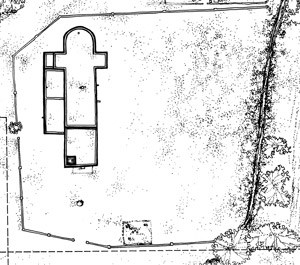
Santa Clara Mission Church
Santa Clara Pueblo
Coordinates: 35.971111, -106.089167
#TravelSpanishMissions
Discover Our Shared Heritage
Spanish Colonial Missions of the Southwest Travel Itinerary

Courtesy of the National Archives. ARC ID: 523835.

Photo by Edward S. Curtis, 1868-1952. Courtesy of the Library of Congress.

By James Lamsam, from HABS. Courtesy of the Library of Congress.

Photo by Jeff Hart. Courtesy of Flickr Creative Commons
Plan Your Visit
Santa Clara Pueblo is located on NM 30, two miles south of Española, NM. From US 84 / US 285 turn west onto Santa Clara Bridge Rd. and then turn left heading south on NM 30 the Los Alamos Highway. From NM 30, turn left onto Rose Rd, make a right onto Kee St. and follow it to the mission church, which will be on the left. Cameras are allowed only with a permit. The pueblo can be visited daily from dawn to dusk. Please call 505-753-7326 for further information.
Santa Clara Pueblo is featured in the National Park Service American Southwest Travel Itinerary. Santa Clara Pueblo is listed in the National Register of Historic Places and has been documented in the National Park Service’s Historic American Buildings Survey.
Last updated: April 15, 2016
